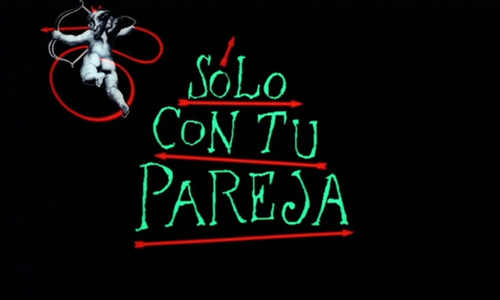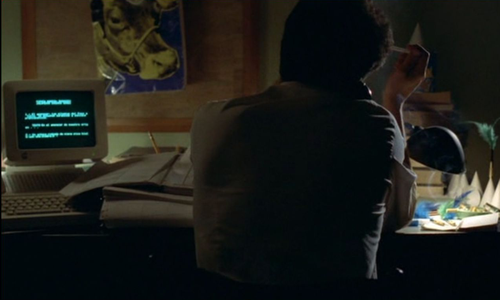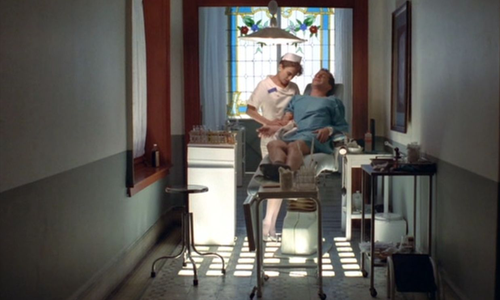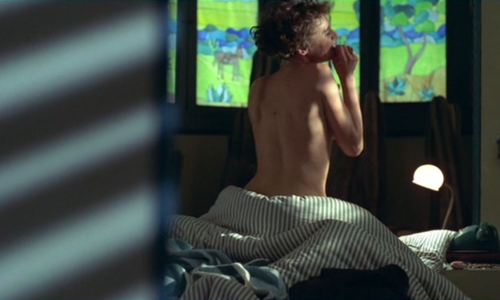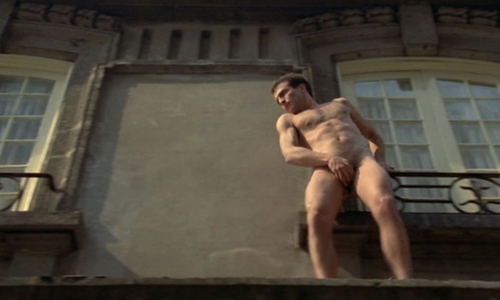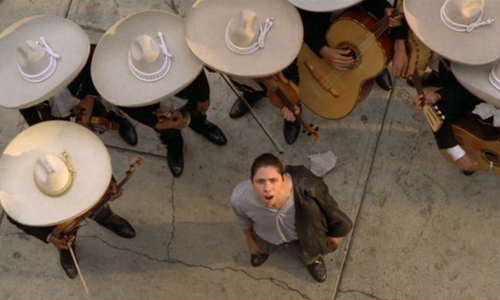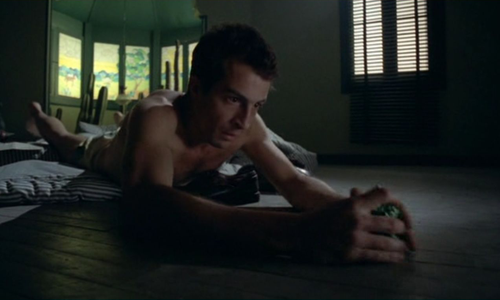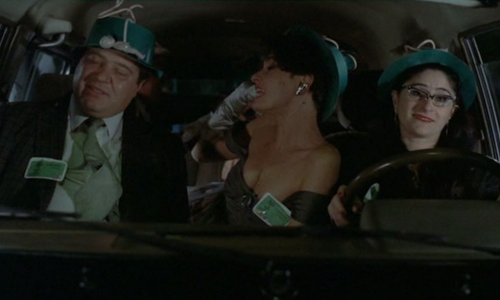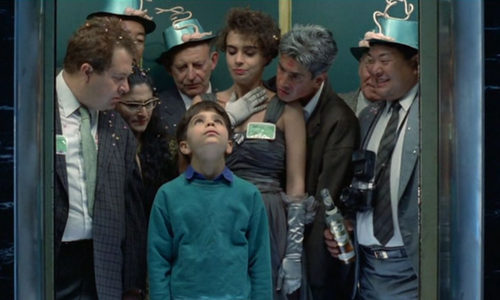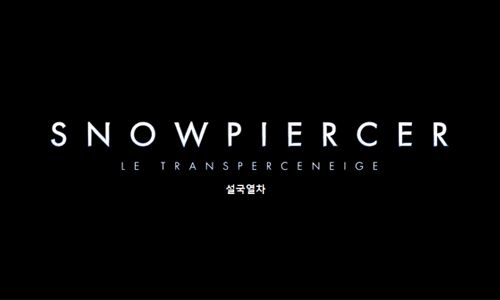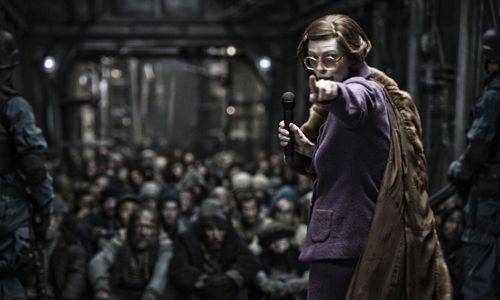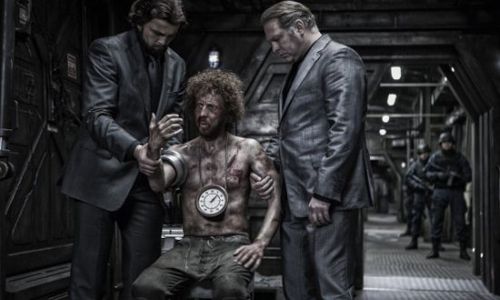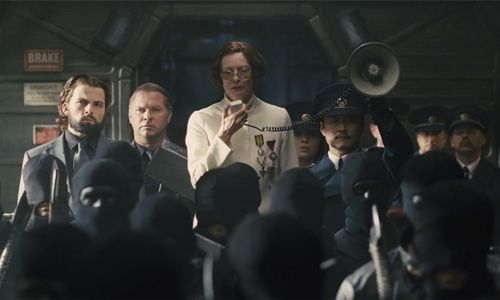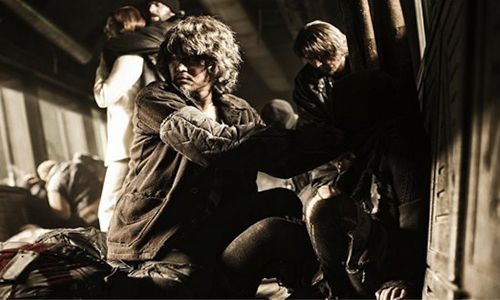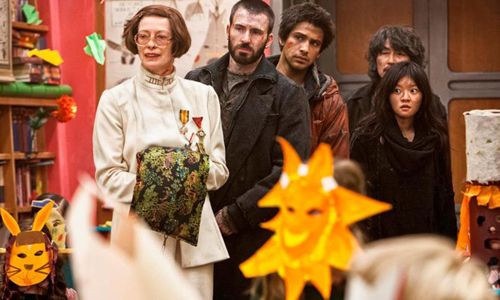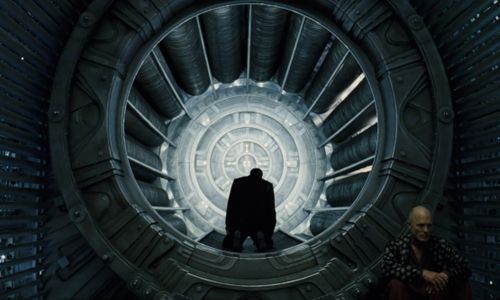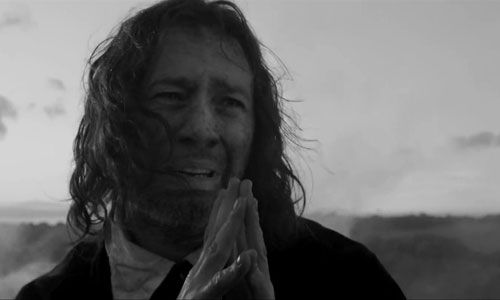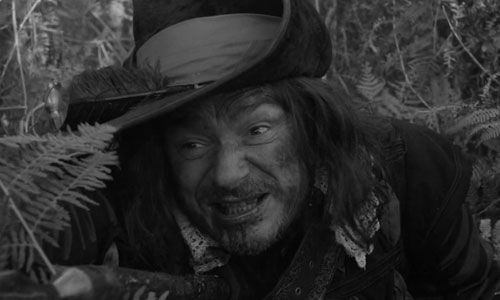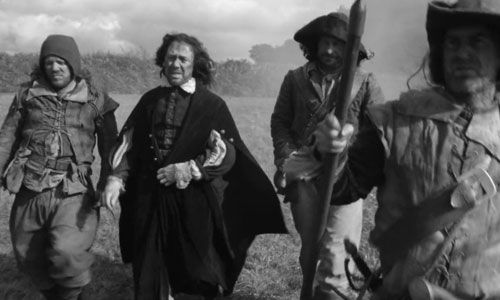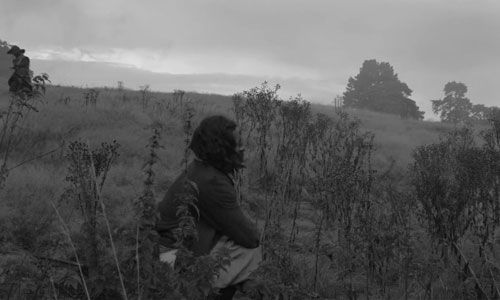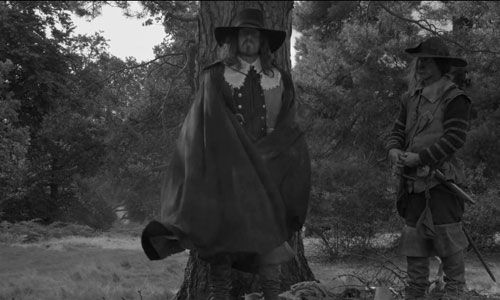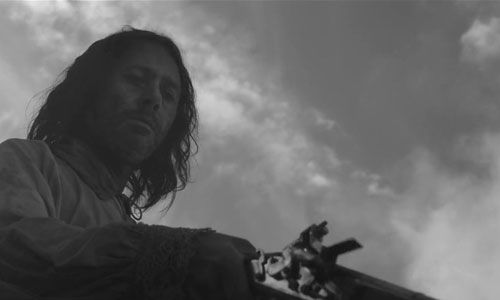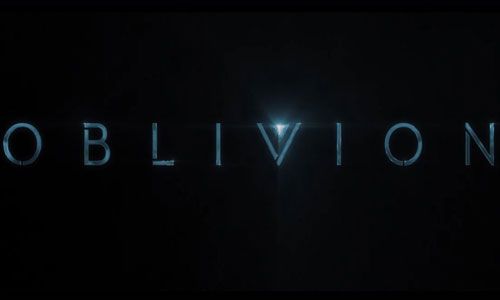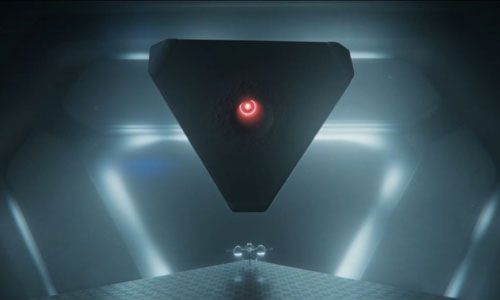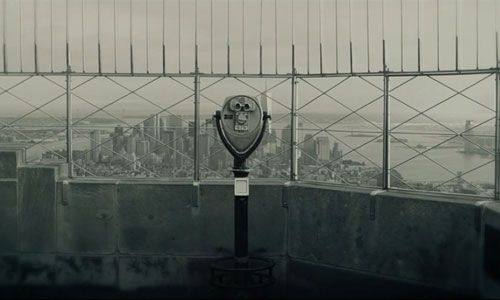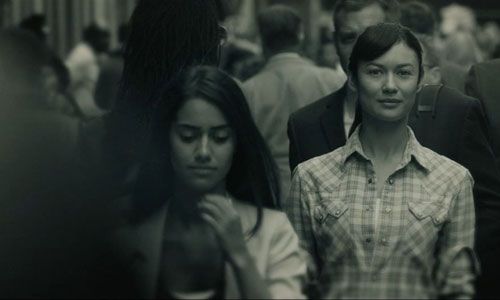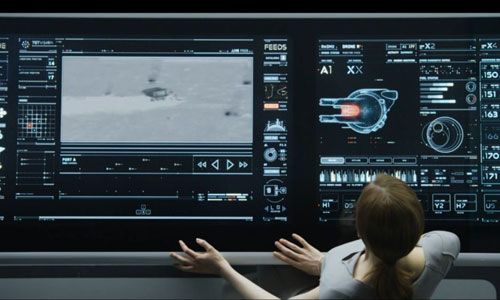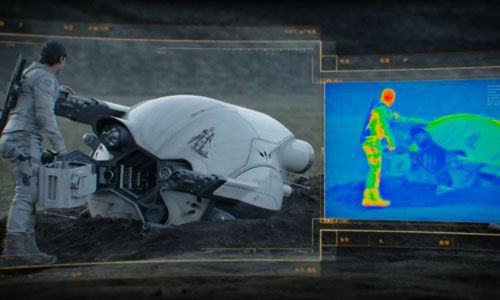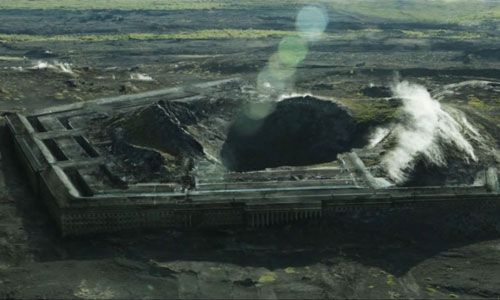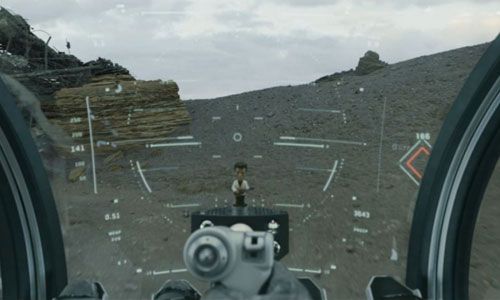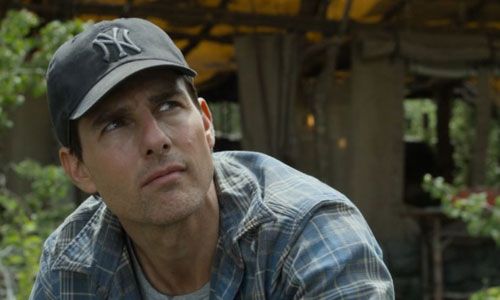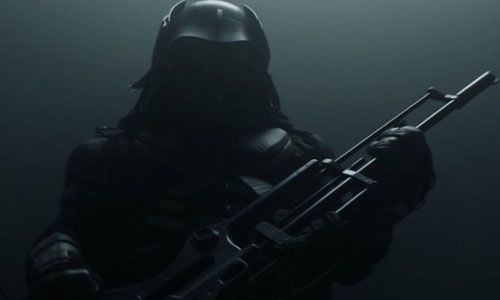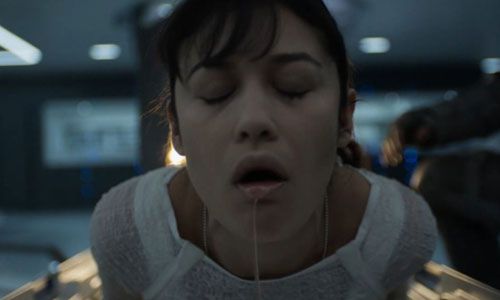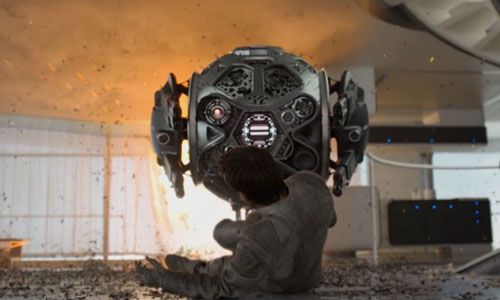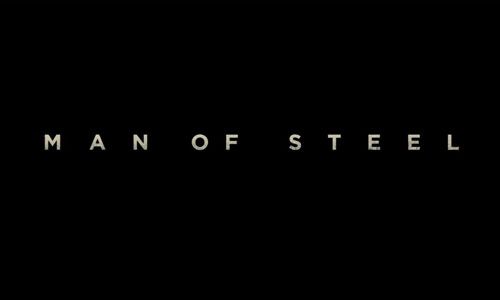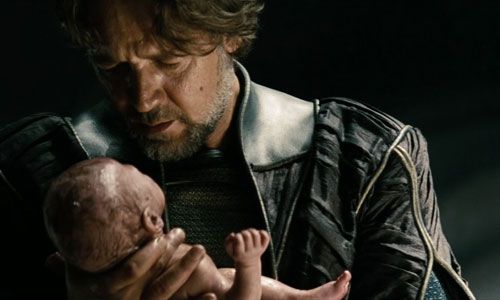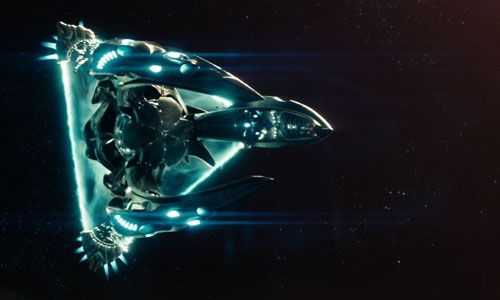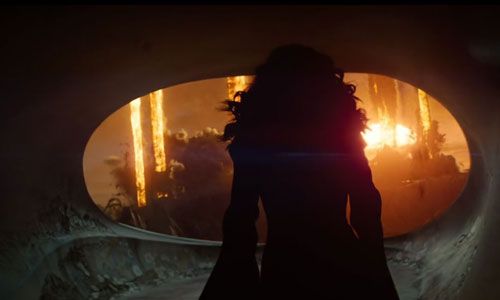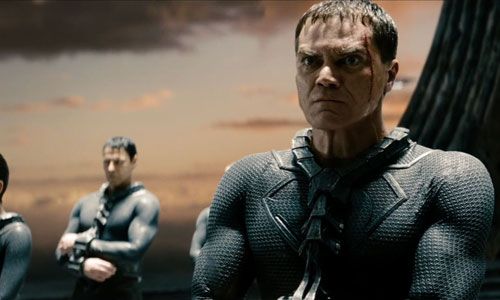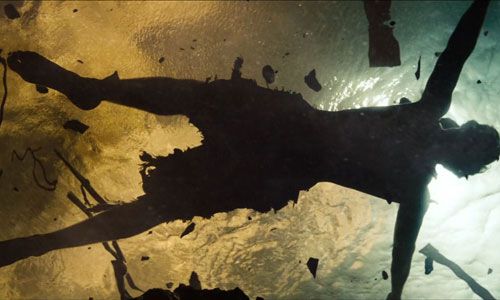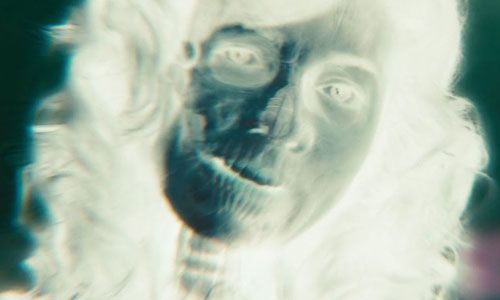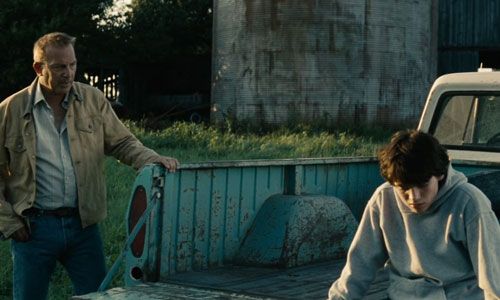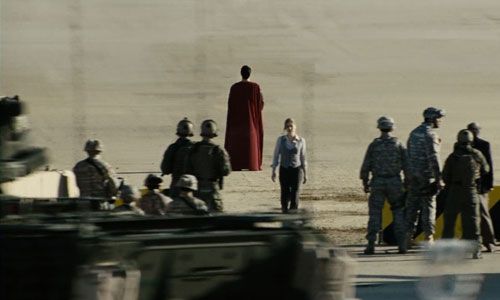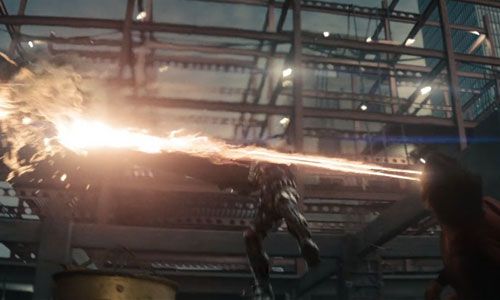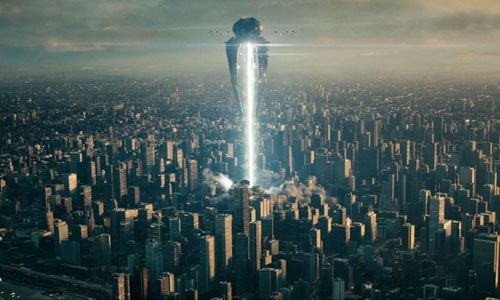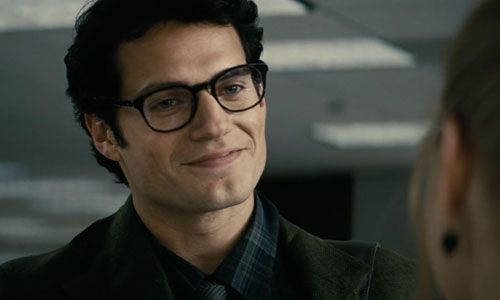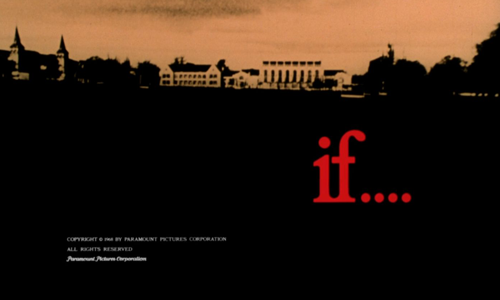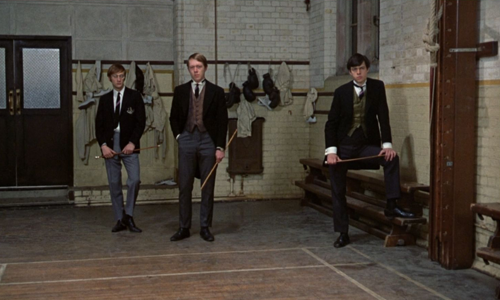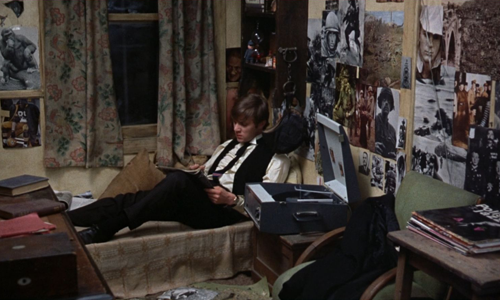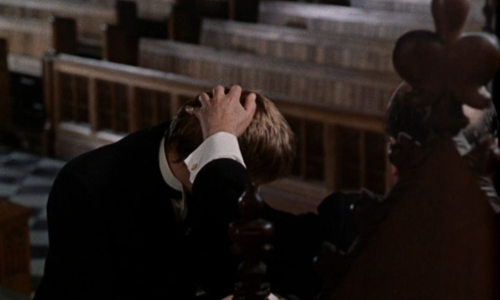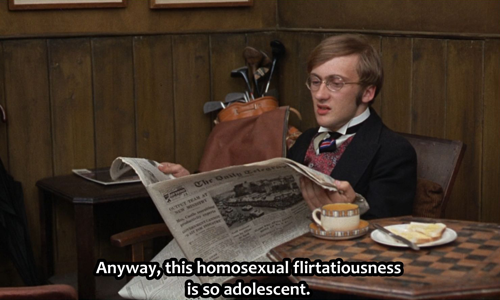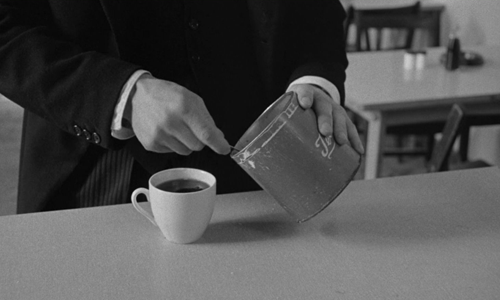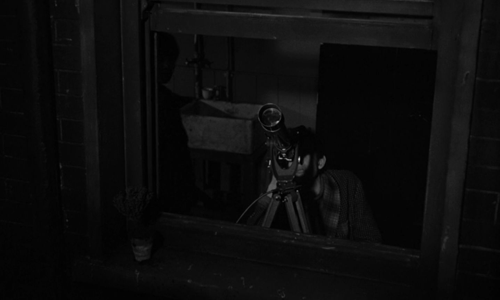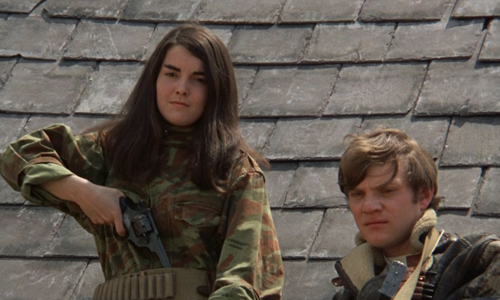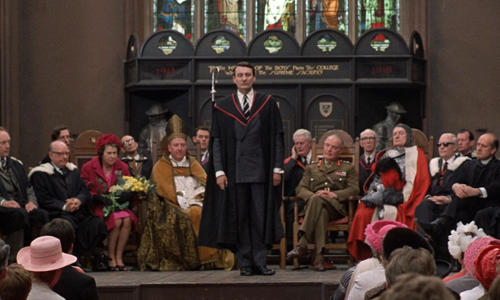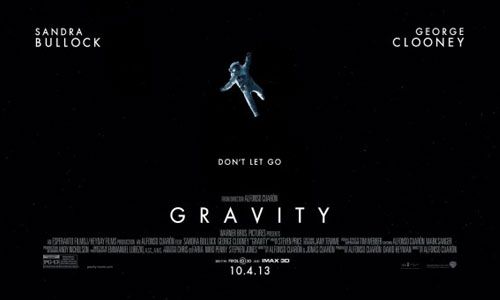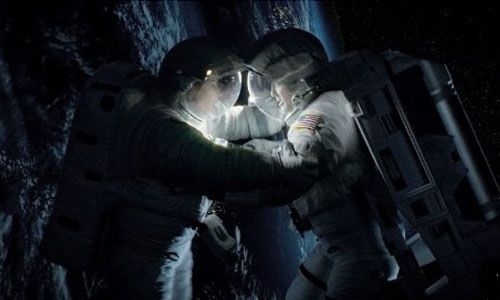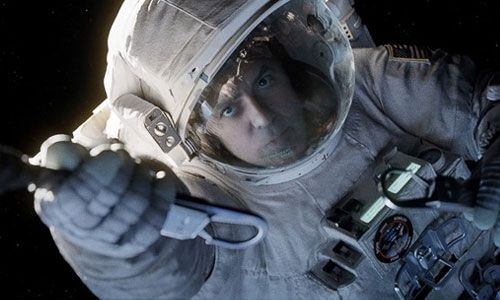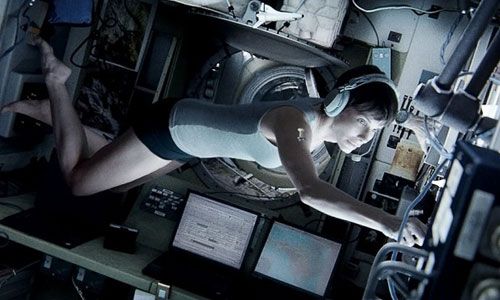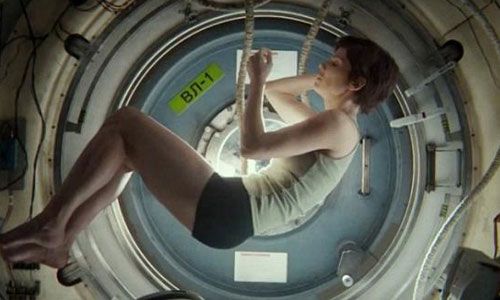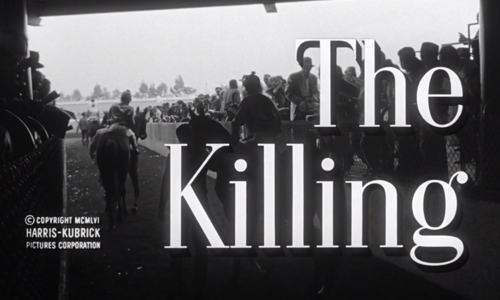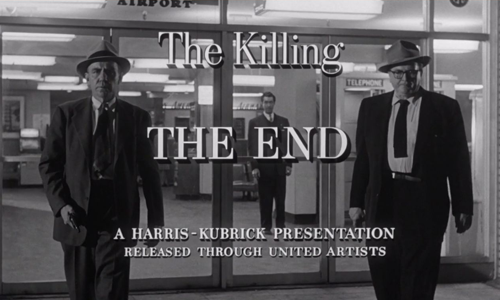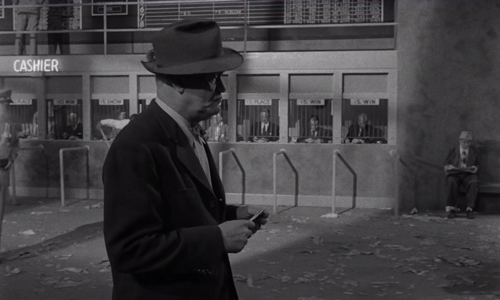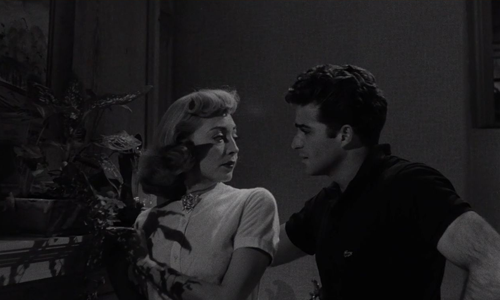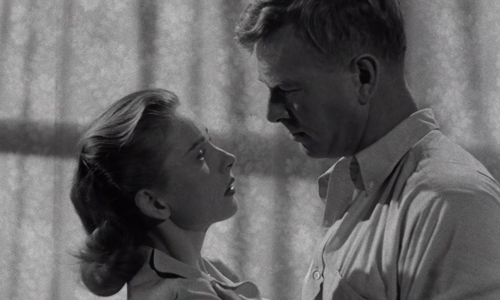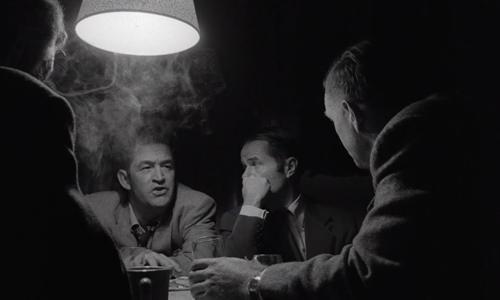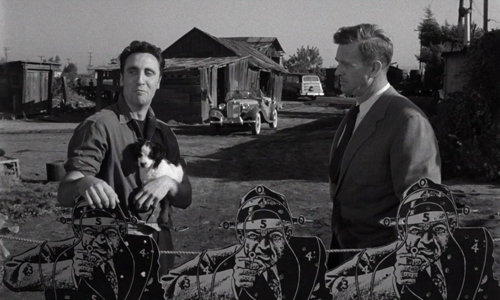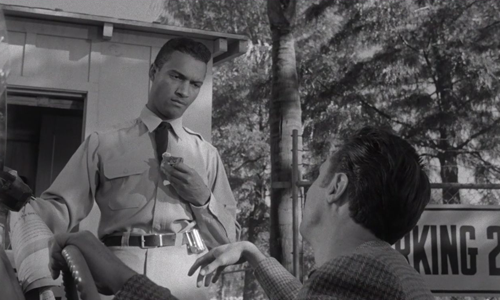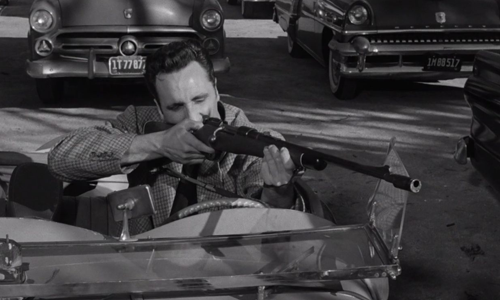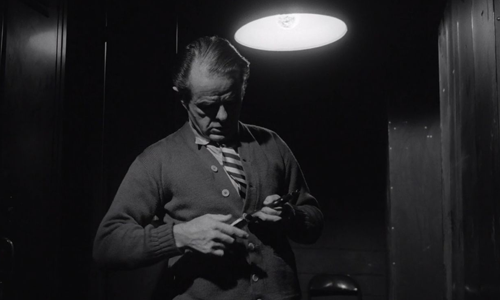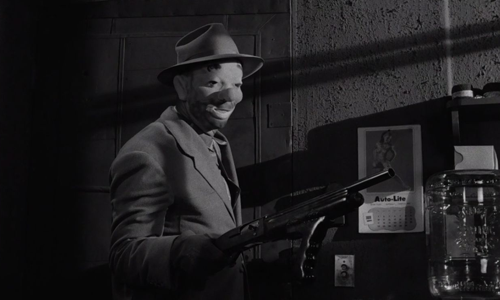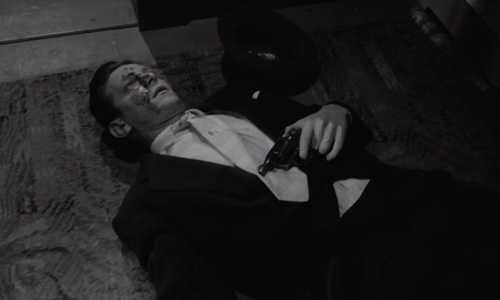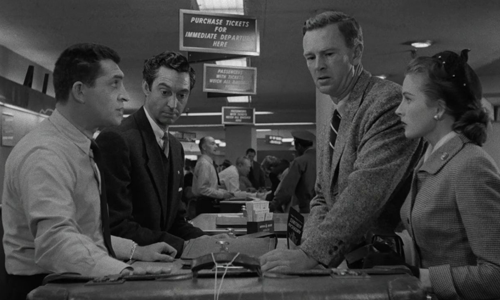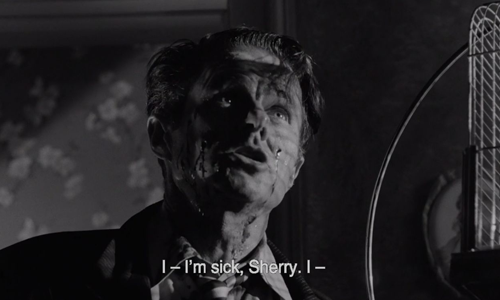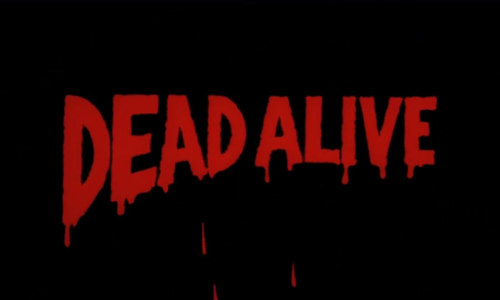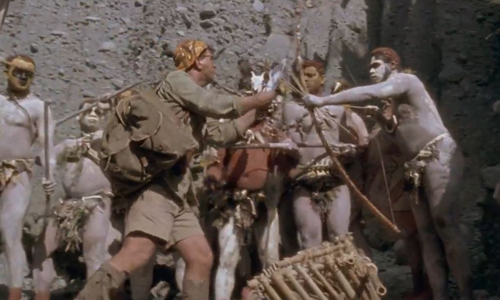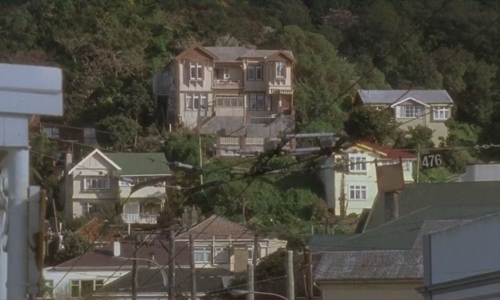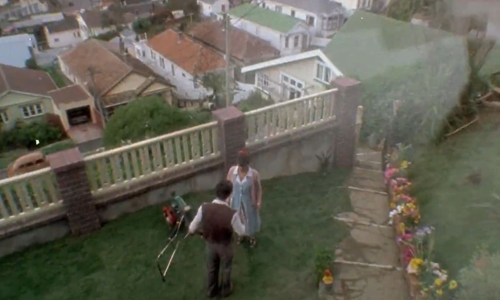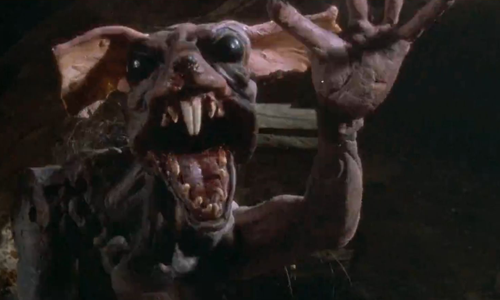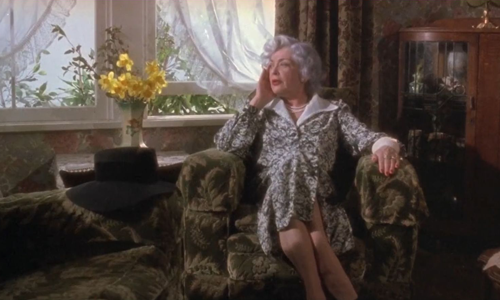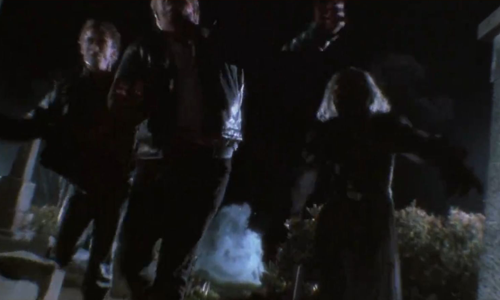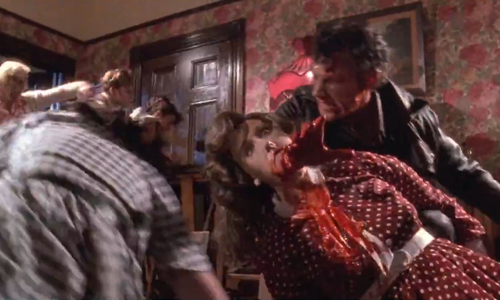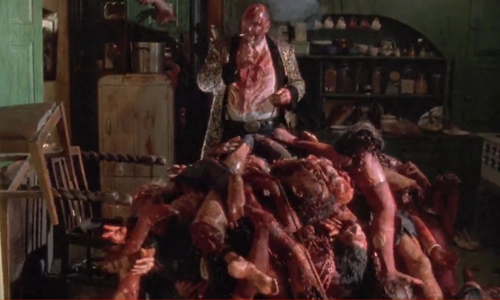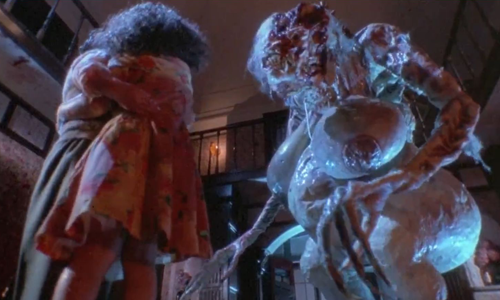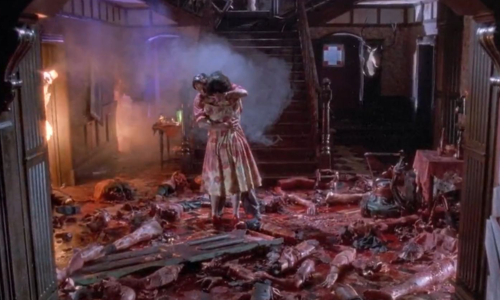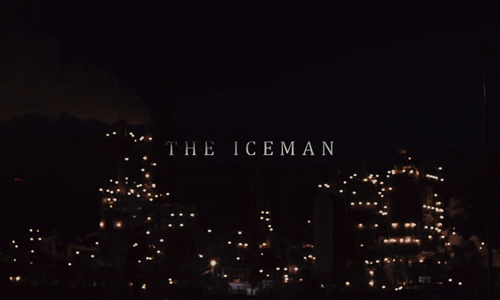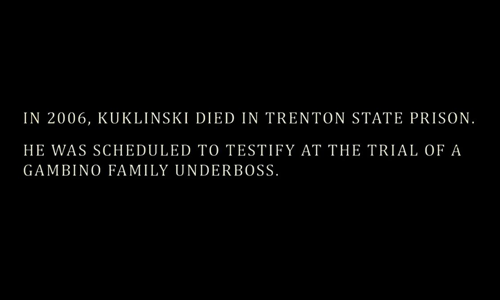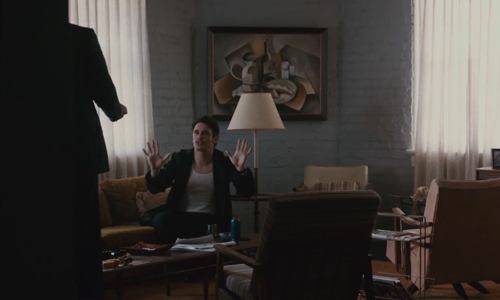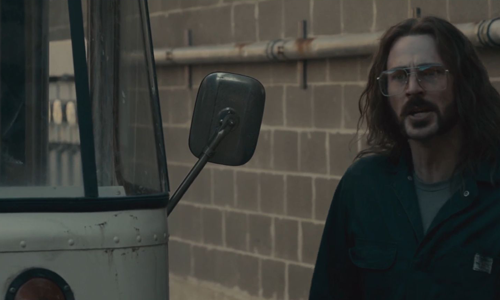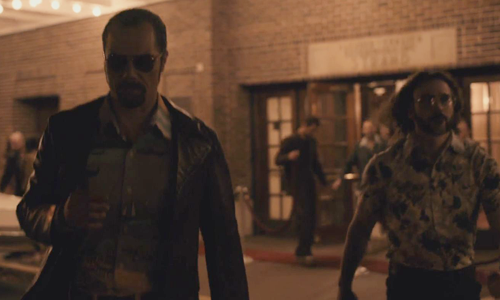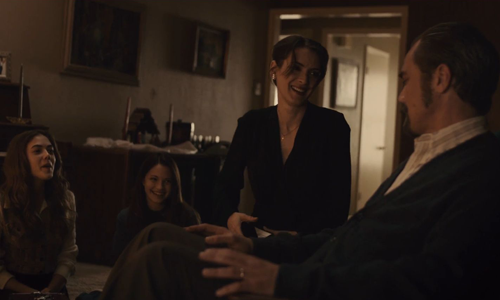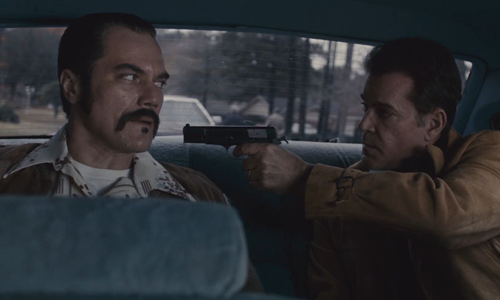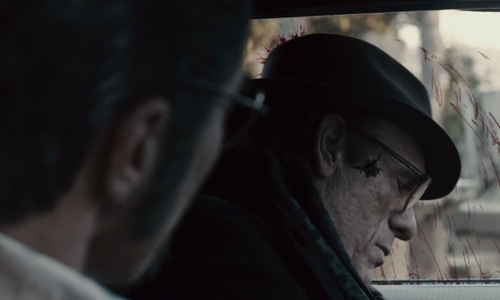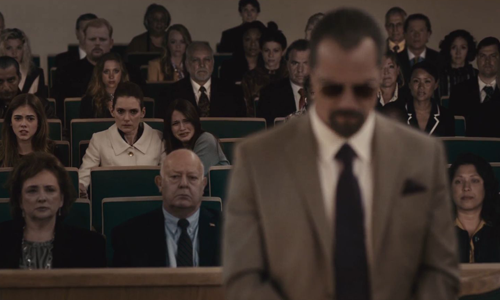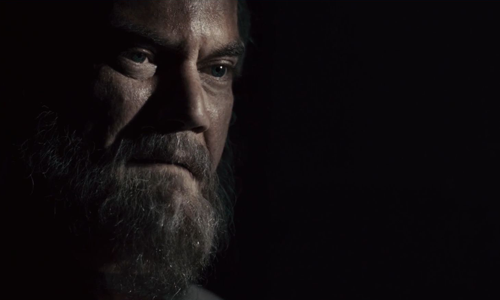#film critic
Hopeless romantics.
Love in the Time of Hysteria (Sólo con tu pareja, 1991), is a film by the masterful Alfonso Cuaron. It is his first full length feature film and shows off his cinematic prowess without a high production budget. It serves as a cautionary tale with a sense of hilarity.
Tomas is an ad-man struggling to find a slogan befitting a can of jalapenos, between his work and figuring out ways to get out of work he squeezes in his personal life which is occupied by his insatiable need to satisfy his sexual urges. One day he hooks up with two women in the same night and gets caught. As payback one of the women pulls a nasty prank on him that leads Tomas to believe he has AIDS.
This film does a great job showing the incredible struggles of finding love. It shows a stark comparison between Tomas and his best friend Mateo—Tomas sleeps around and is by relative definition a good looking male whereas his friend Mateo is overweight but is successful as a doctor and is happily married. A delicate balance is established in the film for the audiences to easily tell the two apart. For Tomas takes the act of making love for granted as he unknowingly has sex with numerous partners but finds no meaning in what he does whereas Mateo and his wife Teresa look down on Tomas for they feel like he takes the best parts of being in love for granted, as Teresa constantly scorns Tomas for his ways.
Upon learning of his condition Tomas goes through many ranges of confused emotions as he even creates a manifest of all the women he has slept with and figures out that this is not him, and that all this time he was doing this to fill a void in his life; he ultimately decides to commit suicide, but is often sidetracked by his own cowardice to do so.
The film displays how many view relationships as something that is more of an imprisonment rather than a gift. It takes the protagonist through a grueling self realization process as he is tortured by the thought that he will one day suffer a slow and painful death; teaching the audience that love is not something that is to be taken light heartedly nor is it achieved through simple means and therefore should not be given out like candy.
Another thing to note once again are the fantastical, yet simple set pieces Cuaron uses to tell his story. There is a lot to look at for he frames his shots with focus being his primary initiative, for the audience is forced to use the elements of his cinematography to also figure out what is going on and what the character is thinking.
Not the best in terms of story, but Cuaron’s artistic prowess keeps the audiences’ attention transfixed on an otherwise “stale-ish” story.
-DK
Not once does this film give into popular conventions. And I love it for that.
Snowpiercer is a film by Bong Joon Ho, this was a film with clear classist values with sci-fi undertones. The director did an excellent job bringing to life his ambitious vision; inspired by a French graphic novel (I have not read it, therefore I will not compare it).
Earth has succumbed to the effects of global warming and in a last ditch effort, humans release a chemical cooling agent into the atmosphere, in hopes to delay the inevitable. This fails; and in turn throws the planet into another Ice Age ending civilization as we know it. The precious few that remain, live in a train, created by its deranged genius Wilford; empowered with the God complex, Wilford forcibly creates a caste system in which the poor suffer inhumane conditions while the rich survive blissfully at the front of the train.
Visceral and intense, the film’s momentum happens rather quickly, as the characters are introduced one after another. They are all in agreement that living in the back of the train sucks, and what’s the point of holding onto erroneous ideals of class when society as a whole has already been reduced to a precious few, why not smash the socioeconomic barrier and attempt to progress humanity beyond the train.
As the gritty violence unfurls and the revolution begins, a lot of violence ensues in a leisurely fashion. I say leisurely, for the survivors even take a break from fighting to ring in the new year, enjoy sushi, and observe a classroom. I really enjoyed this aspect of the movie for Bong Joon Ho plays off the ethos of the survivors. There’s no where else to go but backwards or forward and atop of that aspect, what real purpose is there in fighting, when there’s virtually nothing left to fight over. The tight quarters of the train impacts the environment of its characters effectively thus making the film less about being a sci-fi action thriller and more of an allegory on humanity’s destructive nature.
Ed Harris plays an offshoot of Conrad’s deranged “Mr. Kurtz” or depending on how you look at it; Coppola’s Col. Kurtz. As he is a genius engineer that built the train and eventually adopts a philosophical view that eventually develops into an insane God complex, obsessed with keeping everyone on the train, as he decides who lives and who dies.
Depending on how you look at it the train in the film can be viewed as a metaphor, for like society’s thought process; narrow and enclosed, the train in itself is narrow and enclosed as it trudges forward in a never ending loop, doomed to repeat the same steps over and over again.
Bong Joon Ho took on an immense task readying this film for the international market, and it’s a true testament to his skill as a director of which English is not the primary language, yet he was still able to direct a cast that is comprised of mostly English speaking Caucasians, and still make an effective sci-fi film.
3.5/4
Open up and let the Devil in.
A Field in England, is a testament to Ben Wheatley’s skill in experimental filmmaking; in other words this is something you haven’t seen before. It is an awesome portrayal of macabre as well as subtle storytelling.
Amidst the English Civil War (during the 17th century) a servant that goes by Whitehead is charged with the task of finding an Irishman by the name of O'Neil. Whitehead flees from his handler’s grasp along with others who are fleeing from battle. Alone in a field, they are tricked into doing all the manual labor for an alchemist who had his assistant poison the deserters with psychedelic mushrooms, rendering them helpless to the normal conventions of reality, thus making them easier to control. And all this was done with the hopes of finding some kind of buried treasure.
A Field in England, in my opinion is a foray in the hypothetical, what if alchemy was real?
In this film I believe the director is saying it is and the concept is understood by a few, because after all it is taking place in the 17th Century.
There is a lot of showing and not telling during this movie, as the audience is forced to either sink or swim rather quickly. I understand that this film isn’t for everyone and it’s also not necessarily one’s own personal level of intelligence to understand or like this film, but rather your level of interest on the topic, or if you just enjoy great cinematography then you’ll like this film. Touching on the topic of the film; it’s about alchemy and the surge in interest it had during the 17th century under the guise that people thought they could transmute lead into gold.
Possible Spoilers (evidence from film to support my theory):
Whitehead is a homunculus (as he’s called one by his handler) and he was created by a man known simply as ‘master.’ I believe the Irishman he was charged to find, O'Neil, was an apprentice of Whitehead’s master who stole his notes on Alchemy and was able to teach himself the dark arts, this is why Whitehead was searching for him. O'Neil is later found buried, presumably in another realm as the deserters and Whitehead are forced to tug on a rope tied to a cryptic totem that later pulls O'Neil back onto their plane of existence.
O'neill also accuses Whitehead of knowing the location of the treasure as he’s taken into a tent and presumably tortured, but I think he was shown either a vision and or was 'activated’ by being force-fed these runes which allows his body to be a tool used to find things since he is homunculi; his body can technically be a vessel for other uses befitting of his creator. And afterwards when he’s done supposedly finding the location of the treasure he regurgitates the runes and is returned to a normal state of consciousness.
Wheatley does good in creating an atmosphere in which the most simple things are taught to be appreciated by the audience, for this film takes place during the English Civil War, and science is yet to fully blossom into what it is today, as the audience must grit their teeth through the poor hygiene that is gratuitously displayed throughout the film; which makes the film all that much more visceral to present day audience.
The tent scene was one of the most powerful scenes I have witnessed in cinema, as it is so simple, but the framing and the expression on the actor’s face as well as the music that plays over it gave it a haunting appeal as well as a dark and twisted fantastical sense of hilarity.
Overall I can say that this is a bit of sci-fi/thriller/period piece. Details that are captured is excellent even in an environment that is limited only by production budget but limitless in imagination as these 5 search the field for a treasure that only the supposed Whitehead himself knows of it’s whereabouts.
This is my first film I have seen from Wheatley and I like it a lot. It is a breath of fresh air, for his avant-garde style showed me something new, and daring for this is not a film that cannot ever possibly find commercial success but was still made in the name of art.
3.5/4
-DK
Science fiction that requires no thinking.
Oblivion is a film by Joseph Kosinski, one cannot completely hate this film, for the director tries to expose elements of a true sci-fi film to the masses, of whom would otherwise never give two squirts of piss about the genre. It has all the makings of a great film; the main point being that existential philosophy is intertwined into a story about a post-apocalyptic future on Earth, in which the narration in it of itself is just an illusion.
An alien race known as “Scavs” suddenly appear in Earth’s orbit, they lay waste to our planet for theirs is ruined and they are in need of our resources. Humans are forced to use nukes to stop the Scavs but in doing so ruin Earth, leaving it uninhabitable. Humans are relocated to one of the moons of Saturn and Earth is drained of its remaining resources to help power the human’s new home. in order for this to happen a 2-man team is left on Earth to maintain the machines that carry out these tasks. One day pods crash land on Earth with human survivors and this sets off a chain of events that begin to arise questions within one of the two workers on Earth.
Kosinski does not disappoint in the visual sector as he brings to life the visual effects—effectively within the boundaries of Oblivion’s story. The design of the ships as well as the costumes and the minimal usage of colors reminds the viewer heavily of the greater films that inspired this one.
My main gripe with this film is that there isn’t much originality in it. It is an over simplified high production film that doesn’t leave much to the imagination, but to be fair I saw this film as an introductory lesson in great sci-fi, for the demographic, this film obviously tries to capture are the same people who are fans of Tron and or Tron Legacy, the latter being a film also by Kosinski.
The film tries to weigh upon our emotions as it questions the true identity and worth of the human soul as well as the value of our memories. What makes people, people? Physically we are present, but that’s something that science is proving can be artificially created, so what makes you, you? Oblivion tries to capture this existential state of being in an elementary way as it trudges along its beautiful CGI induced landscapes. It really presents a false sense of being in that it tries to be too intelligible for its own good. Oblivion even spotlights Andrew Wyeth’s renowned art piece “Christina’s World.” A painting considered to be in high regard and a prime example of existential art, for at first glance you see a girl in the prairie and depending on the person one can interpret this painting many different ways for her positioning as well as the isolation invokes many feelings in people. Oblivion tries to piggyback a lot of the film’s contents off the profound content from other people’s works as this film centers around the premise that things are just an illusion and human’s are very easy to manipulate with the right amount of fear instilled into their being.
Development is almost non-existent in this film, as it suffers quality to squeeze in quantity; while at the same time hiding its twists; I guess this is something that would have served better had they hired a better screenwriter or maybe added 15-20 more minutes to the film. It has the feeling of being profound but take away all the bells and whistles and one realizes that everything in this film that gives it any kind of merit is actually borrowed from other films, leaving behind a movie that stands alone as a barely passable action film with a sci-fi theme.
The desolation in the film was the best emotional response I got from it, as it was kept on a very tight leash. To understand that there’s so much empty space available on Earth, but to be limited to such a small sector was really invigorating in terms of the film’s mystique.
I applaud the director on being so sci-fi savvy, and admire his ambition in wanting to expose a great genre that doesn’t get the attention it deserves to a wider audience. However, he needs to work on a project in a collaborative effort, for I do not think he can do it alone. One day, I would love to see his talents develop under the tutelage of the Wachowskis, together they can make a film that would be a classic.
¾
-DK
At least he punched someone in this one.
Man of Steel is Zack Snyder’s take on the Superman franchise. It is better than its predecessor by Bryan Singer, but doesn’t even come close to Nolan’s Batman, in terms of quality. As far as I am concerned this is as good as it’s going to get for Superman, for it is a decent starting point, and it has the potential to only get better.
The film opens on a planet known as Krypton in which a renowned scientist urges his leaders to cease their drilling for it is draining the planet’s natural resources and will eventually lead the planet to ruin. During his tirade a General by the name of Zod unleashes his fury on the leaders due to their negligence on the governance of Krypton and stages a military coup to try and save Krypton and preserve its ways. The scientist otherwise known as Jor-El has conceived a child through natural ways, when Krypton has at this point turned childbirth into a function in which children are literally grown in vast underground fields. As Krypton is laid to ruins Jor-El manages to evacuate his son to planet Earth. Man of Steel, follows Clark Kent as he embarks on a journey to find out about his origins. Throughout his journey he runs into obstacles that remind him of his youth, as he bottles all his anxiety from discovering he is not of this planet and has incredible abilities; he learns to be more human from his foster parents and with the help of Lois Lane.
I can’t say much about this film, for its magnitude and pressure to perform was projected onto the audience. I am not quite sure what it is about it, but the film reeked of desperation; perhaps, it was the similar dark undertones it borrowed from the successful Dark Knight franchise or maybe it was its overwhelmingly large budget…in either case the film felt disenfranchised as it chugged along its long duration pulling its audience from one theme to another.
One can tell that Snyder (director) and Goyer (writer) both wanted to bring another side of Superman onto the big screen, but the with the amount of story that needs to be told in order to make a reboot successful, proved to be no easy task and the weight of that pressure is shown for barely any development is placed upon the love story, and Superman’s flashbacks with his foster parents are overtly heart wrenching in content, but with no actual connection with its audience. The film just felt like I was given a highlight reel of Superman’s origins.
Much of the film is mired in short sequences of up close shots and quick flashbacks to set the tone for the upcoming scene. It felt like I was being presented a beautiful piece of cinematic art with the annoying director’s commentary forcibly playing in the background.
The characters were presented in a rudimentary fashion for we get the obligatory tough guy with good intentions who is un-trusting of superman but eventually comes to terms with him after his life is saved. Lois Lane annoyingly gets into trouble more frequently than needed and is shown to be a tough no “bullshit” character, but sadly it ends there, for her hard nosed behavior constantly places her into dire situations, for an example she wanders into a cave in the middle of the night, oh and that cave happens to be in the Arctic…why on earth would you even venture out at that time of night? Laurence Fishburne is also in this movie, and his acting just felt unmotivated.
Michael Shannon as Zod was great for his stoic presentation created a moral conundrum; being an antihero, he was conditioned to think and function in one way, and when the audience realizes he is doing a lot of his actions through a lack of choice, in turn creates a moral conundrum for Superman. His choice, albeit the hard one is made clear as he chooses the human race over his own people.
Aside from the lack of substance in this film’s drama, the action sequences were entertaining, as an array of superhuman feats were portrayed in a barbaric fashion. Superman and his enemies wail on each other relentlessly in an almost pointless battle of superpowers, but the CGI fight choreography is still really cool.
Choice is the real theme of this film, as Jor-El wanted to create this option for his son, creating a sense of uncertainty. Superman, although gifted with superhuman abilities must also bare the weight of the hardest choices, creating a balance. The religious argument comes into play here as Jor-El wants a better future for his son, a future in which he is gifted with the power to choose his own destiny and to do this he sends his only son to Earth. Doing so, shifts the balance of power in his favor for Kryptonians apparently flourish in the Sun’s radiation granting them powers. Superman becomes Earth’s savior at the age of 33, coincidentally around the same time Jesus was crucified. It’s up to you to decide the filmmakers intents on this one, because I am not touching this argument with a 10ft pole.
Overall, Man of Steel was a real testament to Zack Snyder’s ability to take profound content and just barely scrape away with a decent film. It felt like the weight of its production budget and the pressure to perform weighed down its content and felt like everyone involved was on auto pilot—regardless of who’s in this film none of the actors could save it. Studios need to learn that churning these superhero movies out the way they do is not a good idea for its becoming very apparent that they are in it for the money, and are exploiting its fanbase. Norrmally these facts are well hidden through marketing but now its just too obvious as the market is flooded with this shit.
¾
-DK
Tradition, squandered by youth.
If…., is a film by Lindsay Anderson, a director so meticulous, he’s able to capture the non-sequential spontaneous acts of adolescent boys and frame it in such a way that forces the audience to admire each sequence in the movie.
This film follows the path of students entering their senior year at a boarding school in England during its post WWII era. They are constantly drilled to uphold tradition as well as pride for their country. As adolescents they naturally rebel against the system in typical fashion; drinking, smoking, sneaking off campus…Their expectations for life and their school eventually go completely awry as their own boredom takes over and they plan to lash out violently towards their fellow classmates as well as teachers.
Lindsay Anderson’s vision for the film is a cinematographic masterpiece, in which he portrays an err of caution towards Britain and their traditionalism as they needlessly force old values onto their youths. And grant privilege to those who are undeserving and solely given privileges just because of their birth rights.
Anarchy, is the film’s greatest prescursor as the main characters often break the rules of the strict boarding school by intentionally going against all of its teachings. Their dormitory is even transformed with pictures of war and violence, as its contents decorate their walls; giving clue to the audience that these boys are “lost” and are seeking a greater focal point for their adolescent mind sets. They are seeking for something more, something to fight for and believe in, but cannot find due to the rigid nature of the traditions they must live by.
Like all films that go against archaic traditions and enforce progressive values, the film itself, in its storytelling is different. From the same school of thought as Godard, the film bounces from black and white to color; I tried to think really hard what the director’s intentions were behind this ploy, but couldn’t quite come up with a reason other then the fact that whenever the black and white sequences were occurring, the most simple and mundane tasks were being displayed on screen.
If…., is a great example of a film with not much going on for the majority of its duration, but builds upon performance and its content; the director does a great job with shot selection for he must have had a good working relationship with the cinematographer as it shows in each scene. The film stands out as social commentary and art, the majority of the film is memorable visually in my mind like a photo memorabilia. Lastly, as a side note; it goes without saying, this must have been a film J.K. Rowling scrutinized over for a lot of the details in the film, down to even how the characters are dressed remind me heavily of Harry Potter…
4/4
-DK
Perseverance it’s what keeps you going.
Gravity is a film directed by Alfonso Cuaron, a rare director that is able to take virtually any story handed to him and have it be told through beautiful cinematic sequences. From A Little Princess to Children of Men, his vision for movies is unparalleled and always plummets its audience deep into his film’s story.
A team of astronauts from NASA are sent into space to fix the orbiting Hubble telescope. During their mission another orbiting satellite is destroyed and its remnants now space debris. The debris is rapidly hurdling itself toward the team of NASA astronauts and inevitably makes contact with them, destroying their ship and leaving two astronauts stranded right outside Earth’s atmosphere.
When watching Gravity, and its plot develop, the audience not only is impressed by the amazing visuals in the film, but also by the emotional depth it carries. Sandra Bullock carries the entire film on her back as she goes from the disparate astronaut of whom essentially is in space to do a job and is all “business,” unlike George Clooney, who is often cracking jokes and telling stories while doing his spacewalk. It is in the small moments of dialogue between Bullock and Clooney do we get to realize what each character is about; and the different reasons they have in partaking in a remarkable experience of going to space.
Bullock is disjointed and wandering life with no destination, which makes space the perfect place for her; her character suffered through a tragedy in which her daughter’s life was taken from her due to a freak accident, and it left Bullock questioning the meaning of her existence; with work being the only reason for her existence.
She uses the opportunity that she has with Clooney to talk to him about her problems; turning space into her proverbial chaise lounge in a psychiatrist’s office. It is in these intimate moments that the audience can realize, that there are moments in life that will drag us down, but it’s how we overcome our obstacles and what we take away from the life lesson, is what shapes our future.
In the beginning Bullock’s character goes into space where the lack of gravity is symbolism for her not wanting to face the weight of her issues, but ironically enough it is her issues that help her realize her true strength and helps guide her through her predicament.
Cuaron majestically captures Bullock in the most beautiful ways as her dainty but fit body whimsically floats around in zero gravity, and her emotional depth drives the film past being just a visual spectacle. The moral of the film is simplified due to the simple nature of space and its representation of nothing and everything; the point here is to always persevere against all odds.
This is hands down the single greatest cinematic experience I’ve had in the better part of the last 3 years. Cuaron restores my faith in modern cinema with this gem. This entire film is one long breathtaking visual feat, packed with uncompromising suspense and reminds us that the problems we face on a daily basis is nothing compared to the grand scheme of life.
4/4
-DK
Nurturing genius.
The Killing (1956) is a film by Stanley Kubrick. It has the makings of a classic, but held back only because of the time period in which the film was released, but nevertheless it’s still a prolific look into the minutia of Kubrick.
An ex-convict, finally free from Alcatraz has planned a heist down to the ’t.’ He has gathered all the right pieces that he must need to make it succeed as he brings together a team of people all necessary for the success of the heist. However, the one thing he could not calculate were each person’s motives as well as their personal lives; as the story unfurls so does the universe’s uncertainty as the otherwise perfect plan slowly unravels due to the unpredictable nature of the human condition.
This is a very enjoyable film, for its narration creates the momentum for the film as the ominous narrator pushes the story along in the form of a cautionary tale. The narration also gives clue to the fact that this heist had already happened and that as the audience what we are watching is a re-telling of it, giving the film a superlative feel for the audience as we get to be spoiled with Kubrick’s relatively genius and innovative screenplay.
It’s amazing how much “fat-trimming” is done to the film, as each character isn’t developed by their individuality, for it seemed like the decade in which it takes place defines the characters, for all the roles were seemingly cliche. Yet their intentions for taking the job are all highlighted in their respective categories, which allows the audience to realize why it’s so difficult managing people, because everyone has problems of their own, but will place them on the “back burner” in order to make capital, and to maintain a level of professionalism. Characters need not apply in heist films, only their skill sets, because the success and failure of a heist film lie within the details of the film’s writing.
Kubrick indeed captures the violence in the film with great shock, relative to its time period, as its shaky movements makes its rounds, carefully framing each shot to emphasize the actions of the individuals involved in the caper.
Stanley Kubrick even gives a nod to the game of chess. He alludes to the fact that like chess even the smallest movement of its pieces can completely alter the outcome of the game. This is a great metaphor for the plot as a lot of emphasis is placed upon the precision of the people involved in the heist, and how important each of their roles are to the overall success of the job.
The Killing was an absolute privilege to watch. It shows the makings of a genius filmmaker who will later move on to make 2001, Dr. Strangelove, Barry Lyndon etc. It’s not an depth character study like Clockwork, nor is it revolutionary like 2001, but The Killing is a solid heist film that is created with careful detail
3.5/4
-DK
Blood, guts and a lawnmower.
Dead Alive (aka Braindead) is directed by the fabled Peter Jackson. This film is an exhibition of gore with a context of hilarity. Although corny, the film exercises great discipline as Jackson was able to combine comedy, violence, romance, all of which get summed up in a satisfying denouement.
In a small town in Australia or New Zealand (I think it’s AU or NZ because people were flipping the bird with the “V” sign) a Sumatran Rat-Monkey has been flown in to show it off at the zoo. A histrionic mother spies on her son as he’s on a date at the zoo, unaware of her surroundings she is bitten by the Rat Monkey and is quickly turned into a psychotic zombie. Unbeknownst to her son who is named Lionel; he struggles to keep her “alive” as he takes on a hilarious sense of denial and treats her with the same attention as if she was alive, but with the same precautions one would take with a wild animal. Her condition worsens and soon she is biting others and as they turn, Lionel realizes there is too much to handle between his new found lover, his scheming uncle and his uncontrollable collection of zombies…
The environment created by Jackson in this film adds to this film’s core values, as it doesn’t take itself seriously. The design of the town in which Lionel lives in mirrors that of an ideal “small town” during the 50’s, occupied by set pieces that rival the model set in which “Mr. Roger’s Neighborhood” takes place. Overall, the theme here is “happy go-lucky.” All these elements eventually get shit on by the irony imposed by Jackson in this “squarish” town when the blood and gore begin to splatter, which only adds to the film’s aesthetic appeal.
Peter Jackson, has crafted a wonderful cultist gem in this movie. I loved all of its “campy” elements as it takes on a light-hearted approach to gore a la Sam Raimi. There are absurd close-ups and the content is a joke, at one point there is a kung-fu priest who fights the zombies in the name of the lord as he begins to dismember their body parts with his brute strength, then two zombies even copulate and create a mischievous cannibalistic zombie baby that comically wreaks havoc throughout the duration of the film. By the film’s climax the protagonist plows his way through rows of zombies with his lawnmower strapped to his person and is left in a puddle of blood, so much blood that he’s barely able to stand without slipping.
Dead Alive even finds time through all of its gore infused calamity to even bring closure to the film’s protagonist as he finds out that his domineering mother isn’t the saint he thought she was. Jackson even hints towards an extreme bout of symbolism as he shows Lionel being “born anew” for Lionel gets absorbed into his mother’s womb and has to tear himself out to be free of her, and gain his freedom.
This film is by far one of the most entertaining films I have ever seen. I love these corny forays into gore, it really let’s the imagination run free without having it be sadistic. I know however, that this film’s content isn’t for everyone since not many can take its subject matter seriously enough to enjoy, if that makes sense to you…
3.5/4
-DK
A mind made for murder.
The Iceman is a film by Ariel Vromen. I have never heard of him before this, but he does a decent job creating a film with a lot of potential, but with a lack of direction on its story and its characters’ developments, which ultimately makes this film a lackluster portrayal of a ruthless killer.
Richard Kukliniski was dubbed the “Iceman” after his victims were found to be frozen in order to hide their time of death from the coroners. He rose from low level illegal pornographic distributor for the mafia to favored hitman for the New Jersey and New York crime families; over the span of his illustrious 30+ years as a contract killer he has claimed to have killed over 100 people. During that time span he also raised a family, of whom knew nothing of his troubled career. This film is based on a true story of an inherently evil being who has claimed to have no emotions towards the killings of others.
A lot of the problems in this film revolve around its own timespan. Because Kuklinski is a sociopath and exactly when he started killing are left to our own interpretation the film suffers, for it begins to develop a plot and then goes off track just as quickly. The focus becomes less and less about the psychological nature of what makes Kukliniski so fascinating and more about the betrayal that comes with the territory of being a criminal. There wasn’t enough method in the film to his killings, this was a big “no-no” for me considering a lot of these details are already readily available via the HBO’s documentary/interview with the real Richard Kukliniski.
However, The Iceman is enriched with excellent performances, from all of its actors as they are introduced into the film almost like the ghosts that inhabited Scrooge’s dreams in Dickens’ A Christmas Carol. Each significant visitor being played out in short segments of pure brilliance. It is in these short moments do we get to see where the film shines for it is after each of these interactions do we as an audience get to see Kukliniski’s character lose his way, more and more.
Specific moments that stood out for this film were his interactions with his brother played by Stephen Dorff as he visits him in jail, as well as his interactions with his own wife played by Winona Ryder, and lastly his brief “divine intervention” with James Franco.
These actor’s performances really stood out for me for they are the driving force towards Kuklinski’s actions. His brother revealing that they are cold-blooded killers and unfit for society, his wife anchors what little humanity may or may not exist within Kuklinski, and lastly with James Franco’s character we realize Kuklinski is truly crazy for he questions God’s inability to stop himself from killing others, he even pauses his execution to give God an opportunity to stop him.
I am glad this was made, for Vromen is a talented director. He was able to make sense of a screenplay that should have otherwise been a movie that almost hit the 3 hour mark, but is abridged into just under 2hrs, presenting a lot of beautiful detail but failing to elaborate on a lot of it as they are short handed with cliche story telling to keep the film with a duration that can appeal to many. He just has to be careful on his next projects for I am sure this film will garner him attention in Hollywood.
Michael Shannon delivers a chilling performance as his burly disposition slowly turns from nihilism to pure evil. If this film wasn’t enough to prove his talent, I don’t know what will.
¾
-DK
A little critique about Uncharted (Spoiler free)
First of all, sorry but I’m not a huge fan of Tom Holland, so I think there are some moments that I could have appreciated more. The scenario is not that bad, but I classify it as “Two lucky dummies” because they are intelligent, but they also do really stupid things and stay alive because they are lucky. There are good villains and I appreciate the fact that there are villains assholes and “nice” assholes. I find that pretty interesting.
SPOILER UNDER
I find the whole ship moment really fantastic, the ships are beautiful and there are wonderful views.

I am so honored that the poster I illustrated for Ryūsuke Hamaguchi’s WHEEL OF FORTUNE AND FANTASY has been named one of the best movie posters of 2021 by Posteritati, one of the 20 best film posters of 2021 by Little White Lies, and one of the best movie posters of 2021 by Letterboxd! The Blu-ray will be released on January 11, 2022 by Film Movement and can be ordered here.
The film premiered in North American theaters on Oct. 15 at Film Forum.



The New York Times’ Critic’s Pick, winner of the 2021 Berlin International Film Festival’s Silver Bear Jury Prize, winner of Chicago International Film Festival’s Silver Q-Hugo, a Main Slate selection at the 59th New York Film Festival, an official selection for Buenos Aires Festival Internacional de Cine Independiente, Moscow Film Festival, Hong Kong Film Festival, a Gala Presentation selection at the 26th Busan International Film Festival, and Certified 98% Fresh on Rotten Tomatoes.

On my way to lunch after watching WHEEL OF FORTUNE AND FANTASY at the New York Film Festival on Oct. 2, I had a chance encounter with the director himself! I felt like I had just entered his film (the Japanese title, 偶然と想像, is COINCIDENCE AND IMAGINATION.) He told me how much he loved the poster I illustrated for his film and I congratulated him on his two film premieres – WHEEL OF FORTUNE AND FANTASY and DRIVE MY CAR. What a serendipitous meeting with the master!

Film Movement’s December DVD-of-the-Month. With a Film Club subscription, the recipient will receive a feature film each month on DVD before it’s available to the public, a Director’s Statement, and members-only discounts on all Film Movement Blu-ray and DVD titles!

Instagram photo by taniwaki.kenichi, taken at Bunkamura Le Cinema in Tokyo, Japan. If you see the poster I illustrated anywhere – in print, at a movie theater, etc. – please tag me on Instagram,Facebook,Twitter, or feel free to send pictures. I’d love to see!

